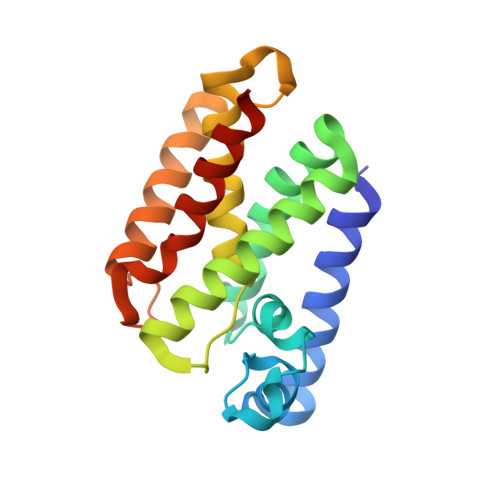Conformational Change in Rhomboid Protease GlpG Induced by Inhibitor Binding to Its S' Subsites.
Xue, Y., Chowdhury, S., Liu, X., Akiyama, Y., Ellman, J., Ha, Y.(2012) Biochemistry 51: 3723-3731
- PubMed: 22515733
- DOI: https://doi.org/10.1021/bi300368b
- Primary Citation of Related Structures:
3UBB - PubMed Abstract:
Rhomboid protease conducts proteolysis inside the hydrophobic environment of the membrane. The conformational flexibility of the protease is essential for the enzyme mechanism, but the nature of this flexibility is not completely understood. Here we describe the crystal structure of rhomboid protease GlpG in complex with a phosphonofluoridate inhibitor, which is covalently bonded to the catalytic serine and extends into the S' side of the substrate binding cleft. Inhibitor binding causes subtle but extensive changes in the membrane protease. Many transmembrane helices tilt and shift positions, and the gap between S2 and S5 is slightly widened so that the inhibitor can bind between them. The side chain of Phe-245 from a loop (L5) that acts as a cap rotates and uncovers the opening of the substrate binding cleft to the lipid bilayer. A concurrent turn of the polypeptide backbone at Phe-245 moves the rest of the cap and exposes the catalytic serine to the aqueous solution. This study, together with earlier crystallographic investigation of smaller inhibitors, suggests a simple model for explaining substrate binding to rhomboid protease.
Organizational Affiliation:
Department of Pharmacology, Yale School of Medicine, New Haven, Connecticut 06520, USA.















